Kiriteshwari village wins ‘India's best village for tourism’ honour - GetBengal story
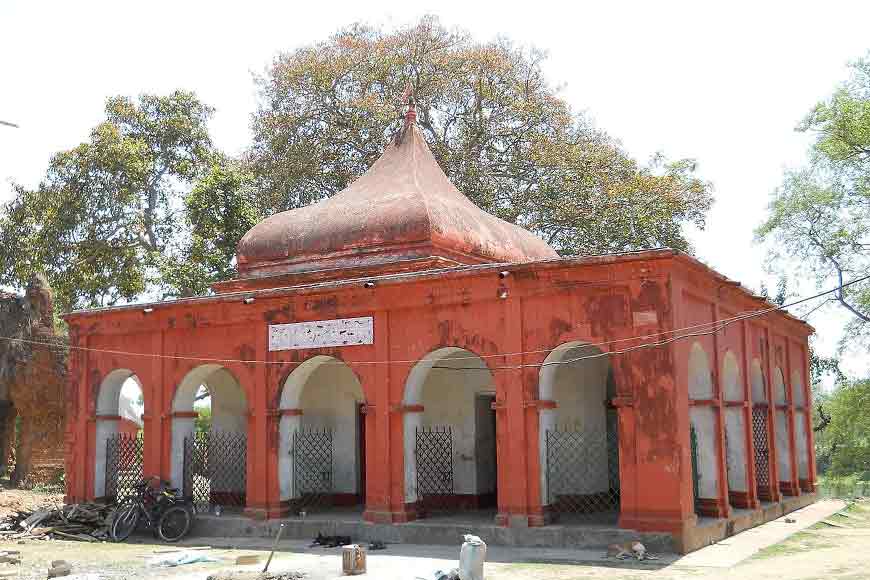
Kiriteswari Temple, Shakti Peeth , Murshidabad
West Bengal Chief Minister Mamata Banerjee who is currently in Spain on a 12-day visit to draw investments for the state from the manufacturing industry in Spain, shared a wonderful news from her personal X handle (Twitter) for the people of the state. She wrote, 'I am very happy to announce that Kiriteshwari village in Murshidabad district has been selected as the best tourist village in the country by the Union Ministry of Tourism. This village has been selected based on the application in the 'Best Tourism Village Competition' of 2023. A total of 795 applications were received in this competition from 31 states and Union Territories of the country. The Ministry of Tourism will present the award on September 27. I congratulate all the residents of Kiriteshwari village. Joy Bangla.'
This brought glad tidings not only for the residents of Kiriteshwari, but also for the entire state. In the recent years, West Bengal has been making giant strides in the tourism and hospitality sector. There has been an overall increase of about 385% growth of tourist inflow (both domestic and foreign) in West Bengal since 2000. Tourism contributes around 13 per cent to Bengal’s GDP, much higher than the national average of 7.5 per cent. The importance of tourism, as an instrument of economic development and employment generation, particularly in remote and backward areas, has been well recognized the world over and the market size of the Global Tourism industry is expected to increase 13.9% in 2023. Therefore, the people of West Bengal have a reason to celebrate.
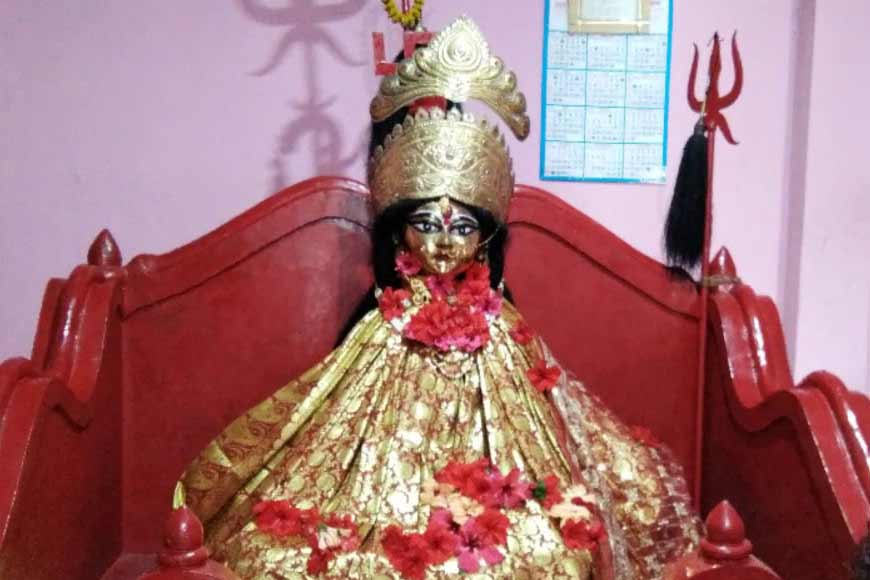 Main deity, Mukuteshwari
Main deity, Mukuteshwari
Tourism plays an important role in economic development and creation of jobs in the state. The systematic development of tourism is also linked with the industrial revolution and the change in the mode of travels with introduction or expansion of rail travels, aviation and automobile. The Best Tourism Villages Competition is another similar enterprise by the Indian Institute of Tourism and Travel Management, an autonomous body under the Ministry of Tourism, Government of India and the Central Nodal agency to support the Ministry of Tourism.
The competition seeks to honor a village that best exemplifies a rural tourism destination. It showcases the renowned cultural and natural assets, preserves and promotes community-based values, goods, and lifestyles of the villages in India. It promotes the commitment of the villages towards sustainability in all of its aspects - economic, social, and environmental. Its goal is to make tourism one of the drivers of positive change, rural development, and community well-being. Such campaign helps create a colorful image of India in the minds of consumers all over the world, and leads to an increase in the interest among tourists.
After Mamata Banerjee became the chief minister, she emphasized the need to explore all possible options to boost tourism in West Bengal. Last year, she took the initiative to constitute a task force headed by chief secretary H.K. Dwivedi to unlock and augment the tourism potential in the state. The task force has been working with various state departments to come up with plans to increase tourist footfall and create new facilities and attractions for them. A number of new destinations were zeroed in from various districts where development of infrastructure facilities were undertaken to promote them and facilitate investments in the hospitality sector.
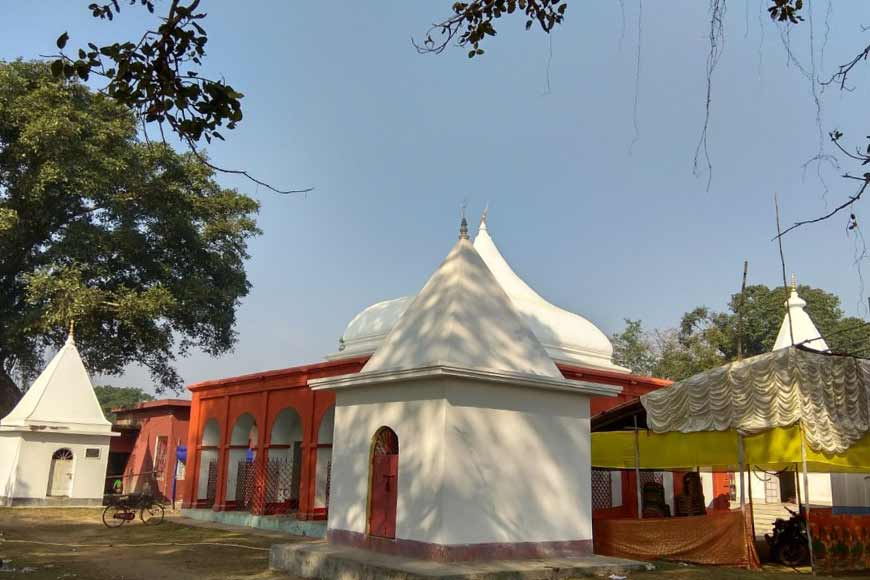 Kiriteshwari aka Kiritakana village, Murshidabad
Kiriteshwari aka Kiritakana village, Murshidabad
Kiriteshwari aka Kiritakana, a tiny village nestled amid forests lies on the west bank of Bhagirathi River in Lalbag subdivision, Murshidabad. Once a prosperous village, the place’s former glory can be perceived from the large number of temples, many of them in ruins spread across the hamlet. The village is revered as one of the holy 51 Shakti Peethas (Seat of Shakti), an important pilgrimage destination in Shaktism, the goddess-centric denomination in Hinduism. According to the Puranas, Sati’s kireet (crown) fell on this spot during Dakshayagna. Therefore, Kiriteshwari village has been venerated as a land of Shakti Sadhana (meditation) since the days of yore. The presiding goddess of the village shrine is Devi Vimala and Samvarta, the Bhairab, guards her abode. The village is located a few kilometers away from Dahopara, one of the holy pilgrims of the Vaishnavas. Locals often refer to the temple as that of Devi Mahishasuramardini, one of Goddess Durga’s forms. Special puja rituals are performed on the auspicious day of Durga Ashtami and a rock that is believed to be an embodiment of the goddess, is given a special bath. Thousands of Shakta devotees throng this temple on the day of Kali Puja.
The most fascinating aspect of the village is that both Hindus and Muslims have been jointly taking care of this holy shrine for generations. The temple’s management committee has several Muslim members as well. The village is an epitome of communal harmony and the award is a fitting tribute to this spirit of unity and goodwill. It is believed that the temple was constructed more than 1000 years ago. The original temple was destroyed in 1405. The present temple was re-constructed by Maharaja Darpanarayan Roy, ruler of Lalgola in the 19th century. Incidentally, this is the earliest surviving architectural wonders among the 51 Peethas and the oldest temple in entire Murshidabad district. The present char-chala temple is of moderate size, but the curve of the cornice has been repeated as a pattern all the way up the roof (eight segments).
Legend has it that after the Battle of Plassey, when Mir Zafar drowned one of his allies, King Rajballabh, one of the Shiva-lingas in this temple exploded on its own. Much later in his life, Mir Zafar was afflicted with leprosy. By then, he was a frail, disillusioned man driven by guilt and wreathing in grief. During this phase, it occurred to him that if he could drink the ‘Charanamrita’ (water in which the foot of Maa Kiriteswari was washed), he would be cured. Word went around and his subjects rushed to fulfill the ailing Nawab’s wishes. According to lore, when the holy water reached Mir Zafar, he was on the throes of death. He had the water and breathed his last.
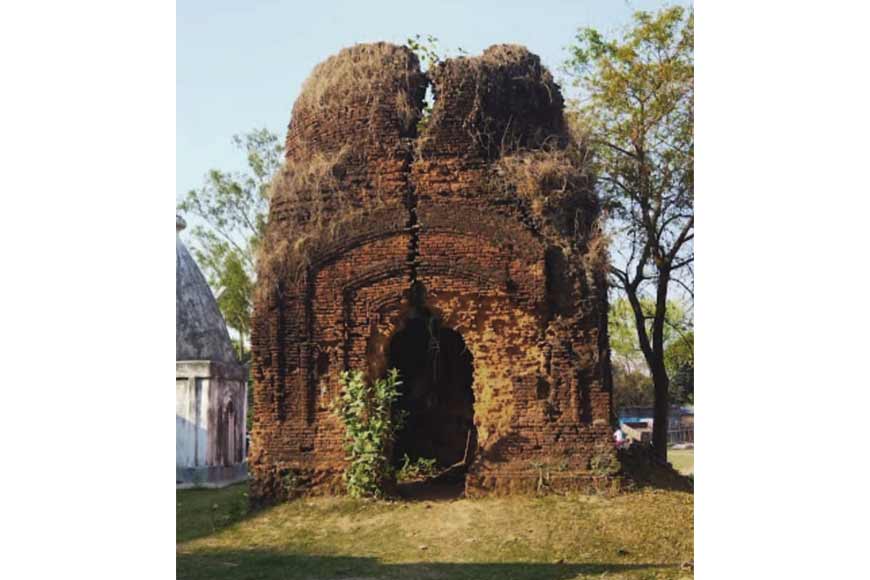 Kiriteswari temple's ancient structure
Kiriteswari temple's ancient structure
According to historical records, Mughal Emperor Akbar entrusted the responsibility of maintaining this temple to Maharaja Bhagwan Roy, King of Lalgola. His descendant, Maharaja Darpanarayan later inherited the family’s responsibility. Apart from the annual Durga Puja and Kali Puja, the goddess is worshipped on the auspicious occasion of Ratanti Amavasya, in the month of Magha (mid-January to mid-February). A weekly day-long fair is held every Tuesday throughout the month of Poush (mid- December to mid-January). This fair has been in vogue since the time of King Darpanarayan, who initiated it.
At present, the temple committee, comprising a significant number of Muslims members, takes care of the maintenance and development of the temple. Late Abdul Hakeem Mandal, a resident of Mukundabag village panchayat, donated a plot adjacent to the temple. His sons fulfilled his wish after his demise. Another temple was built on a portion of the land. The village is a testimony of a unique harmony and camaraderie that the residents share. They are elated to know that their village has been declared India's best tourist village.
This recognition is harbinger of joy in the one hand and entails responsibilities on the other. Lack of funds has been a major constrain for a long time and renovation of the temples is urgently required. Overhauling of the roads leading to the village is necessary. Proper and adequate accommodation for tourists has to be constructed since it is expected the recognition will attract more tourists not only from within the country but also abroad.
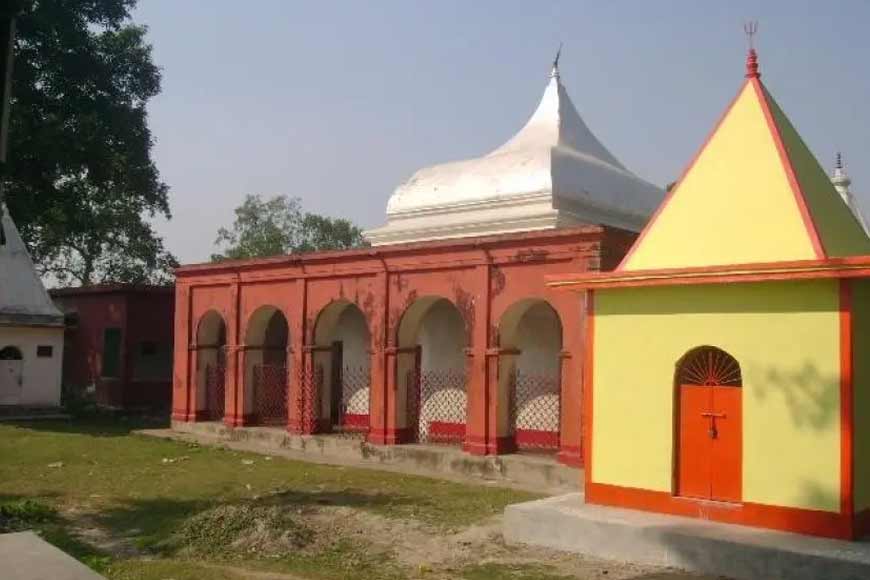
The importance of tourism, as an instrument of economic development and employment generation, particularly in remote and backward areas, has been well-recognized the world over. It generates local employment both directly in the tourism sector and in various support and resource management sectors and stimulates profitable domestic industries – hotels and other lodging facilities, restaurants and other food services, transportation systems, handicrafts and guide services. The residents of Kiriteshwari hope the government’s recognition will stimulate improvements to local transportation, communication and other basic community infrastructures and boost their general economic condition in the near future.









